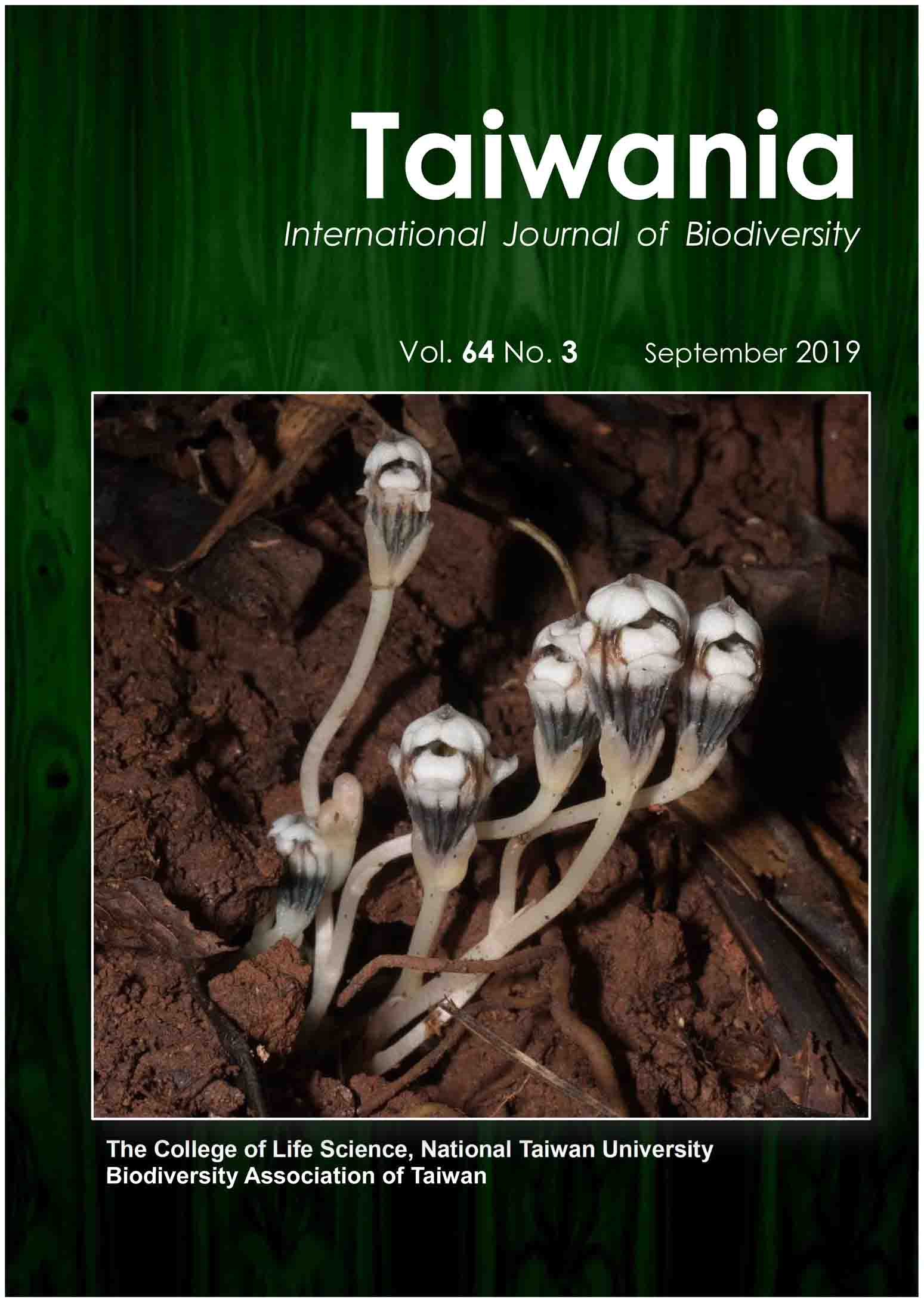Research Paper
Four new Cryptocoryne (Araceae) from Sumatera, Indonesia: a new variety and three interspecific natural hybrids
Suwidji Wongso, Ni Putu Sri Asih, Jan D. Bastmeijer, Karen Rysbjerg Jsensen, William Reichert, Marian Ørgaard, Niels Jacobsen
Published on: 26 July 2019
Page: 326 - 338
DOI: 10.6165/tai.2019.64.326
Abstract
A new diploid variety, Cryptocoryne cordata var. wellyi from the Riau Province in Sumatera is described. Three interspecific natural hybrids are also described: the diploid C. ×ardyi, the triploid C. ×jambiensis and the tetraploid C. ×zukalii nothovar. sumateraensis, of which the tetraploid hybrid involves C. cordata var. diderici as one parent. The hybrids are sterile but propagate vegetatively, forming large stands. A key to the Cryptocoryne taxa of Sumatera is provided.
Keyword: Chromosome number, Cryptocoryne, Interspecific hybrids, Pollen fertility, Pollen stainability, Sumatera, Variety
Literature Cited
Arends, J.C., J.D. Bastmeijer and N. Jacobsen 1982 Chromosome numbers and taxonomy in Cryptocoryne (Araceae) II. Nord. J. Bot. 2(5): 453-463.
DOI: 10.1111/j.1756-1051.1982.tb01208.xView Article
Google Scholar
Bastmeijer, J.D. 2019 The crypts pages. Published at http://crypts.home.xs4all.nl/Cryptocoryne/index.html [accessed 18 May 2019].
Bastmeijer, J.D., T. Idei, N. Jacobsen, A.M. Ramsdal and D. Sookchaloem 2010 Notes on Cryptocoryne (Araceae) of Thailand, including a new species from Loei Province. Thai Forest Bulletin (Bot.) 38: 179-183.
Ipor, I.B., C.S. Tawan, J. Abai, N. Saupi and K. Meekiong 2009 Notes on occurrence and distribution of Cryptocoryne species in Sarawak. Fol. Malaysiana 10: 115-138.
IUCN/SPS 2017 Guidelines for using the IUCN Red List categories and criteria. Version 11. Prepared by the Standards and Petitions Subcommittee. Published at http://cmsdocs.s3.amazonaws.com/RedListGuidelines.pdf [accessed 1 Dec 2018].
Jacobsen, N. 1977 Chromosome numbers and taxonomy in Cryptocoryne (Araceae). Bot. Notiser 130: 71-87.
Jacobsen, N. 1985 The Cryptocoryne (Araceae) of Borneo. Nord. J. Bot. 5(1): 31-50.
DOI: 10.1111/j.1756-1051.1985.tb02068.xView Article
Google Scholar
Jacobsen, N. 2002 Der Cryptocoryne cordata Griffith Komplex (Araceae) in Malesien. Aqua-Planta 27: 150-151.
Jacobsen, N., J.D. Bastmeijer, J. Bogner, H. Budianto, H.B. Ganapathy, T. Idei, I.B. Ipor, T. Komala, A.S. Othman, R. Rosazlina, J. Siow, S. Wongso and M. ?rgaard 2016 Hybrids and the Flora of Thailand 2: Hybridization in the Southeast Asian genus Cryptocoryne (Araceae). Thai Forest Bulletin (Bot.) 44: 53-73.
DOI: 10.20531/tfb.2016.44.1.11View Article
Google Scholar
Jacobsen, N., J.D. Bastmeijer, S. Wongso and M. ?rgaard 2019 Artificial hybrids in Cryptocoryne (Araceae) 5: Hybridization with species from Sumatera, Indonesia. Aroideana 42, in prep.
Jacobsen, N., T. Idei and D. Sookchaloem 2012 Cryptocoryne. – Pp. 218-232, pl. xlv – lviii, in: P.C. Boyce, D. Soockchaloem, W.L.A. Hetterscheid, G. Gusman, N. Jacobsen, T. Idei & N.V. Du, Flora of Thailand 11(2). Acoraceae & Araceae. Bangkok: The Forest Herbarium, Department of National Parks, Wildlife and Plant Conservation.
Jacobsen, N. and M. ?rgaard 2019a Natural hybridization - recombination - an ever-ongoing process. Thai Forest Bulletin, BOT. 47(1): 19-28.
Jacobsen, N. and M. ?rgaard 2019b Artificial hybrids in Cryptocoryne (Araceae). Hybridization between Sri Lankan species within the 2n = 28 chromosome group. Aroideana 42(1): 76-106.
Othman, A.S., N. Jacobsen and M. Mansor 2009 Cryptocoryne of peninsular Malaysia. Penerbit University Sains Malaysia, Pulau Pinang.
Reichert, B. 2015: Die Kultur der Cryptocorynen in den USA und Kanada. Aqua Planta 40: 125-136.
Reitel, S. 2017 Cryptocoryne sp. “Singkep 8”, eine naturhybride von der Insel Singkep, Sumatra, Indonesia. Aqua Planta 42: 4-8.
Wit, H.C.D. de. 1990: Aquarienpflanzen, ed. 2. Stuttgart, Ulmer.
Wongso, S., J.D. Bastmeijer, H. Budianto, I.B. Ipor, K.R. Munk, M. ?rgaard and N. Jacobsen 2017 Six new Cryptocoryne taxa (Araceae) from Kalimantan, Borneo. Willdenowia 47(3): 325-339.
DOI: 10.3372/wi.47.47314View Article
Google Scholar


